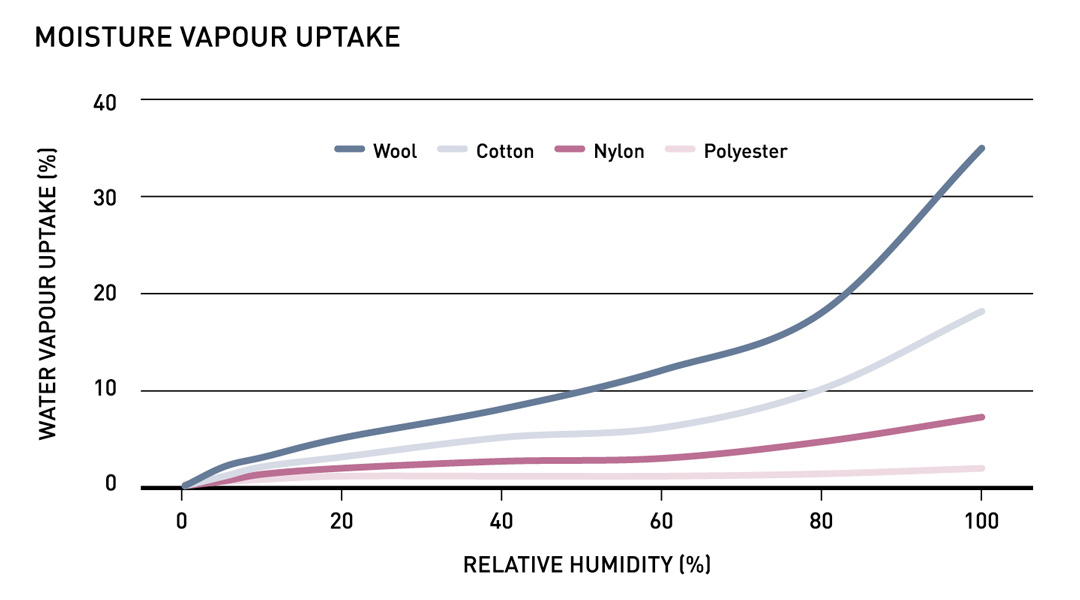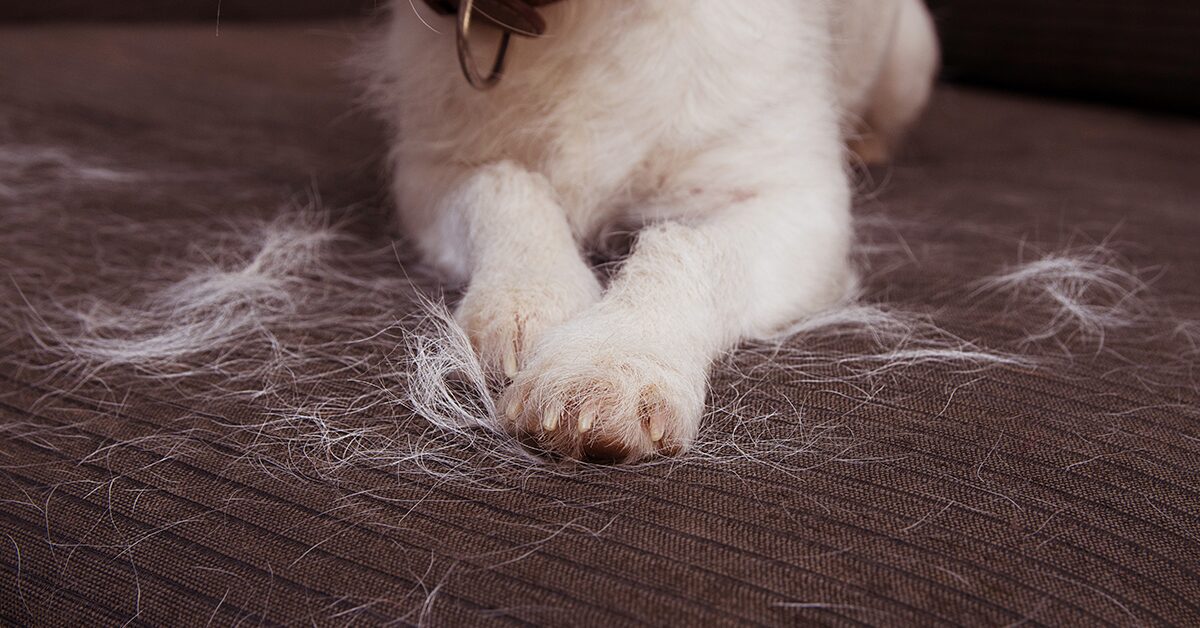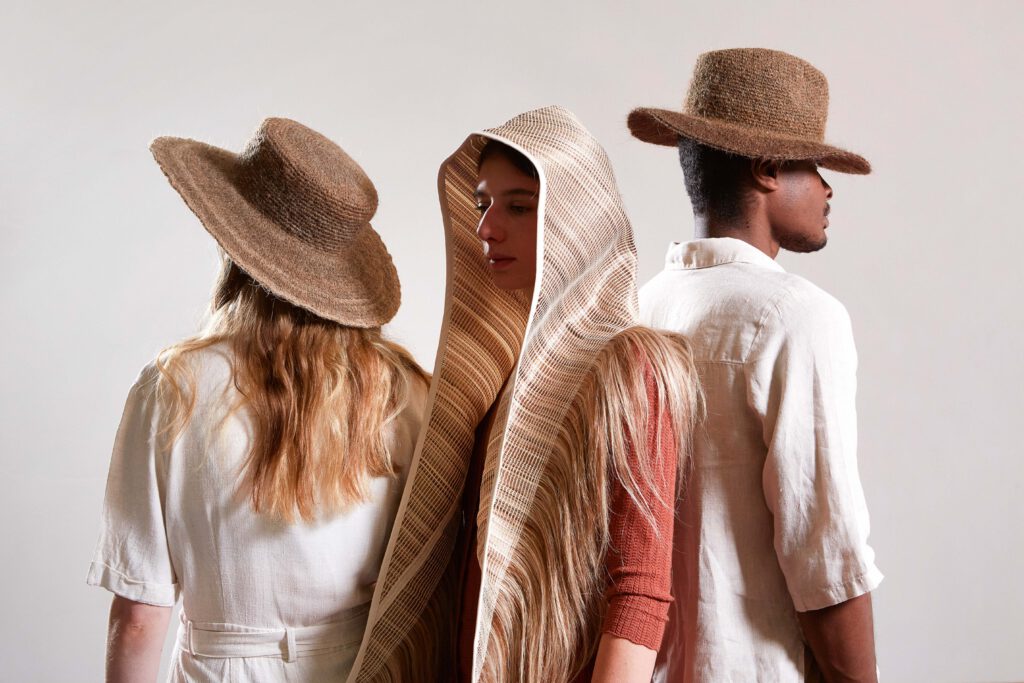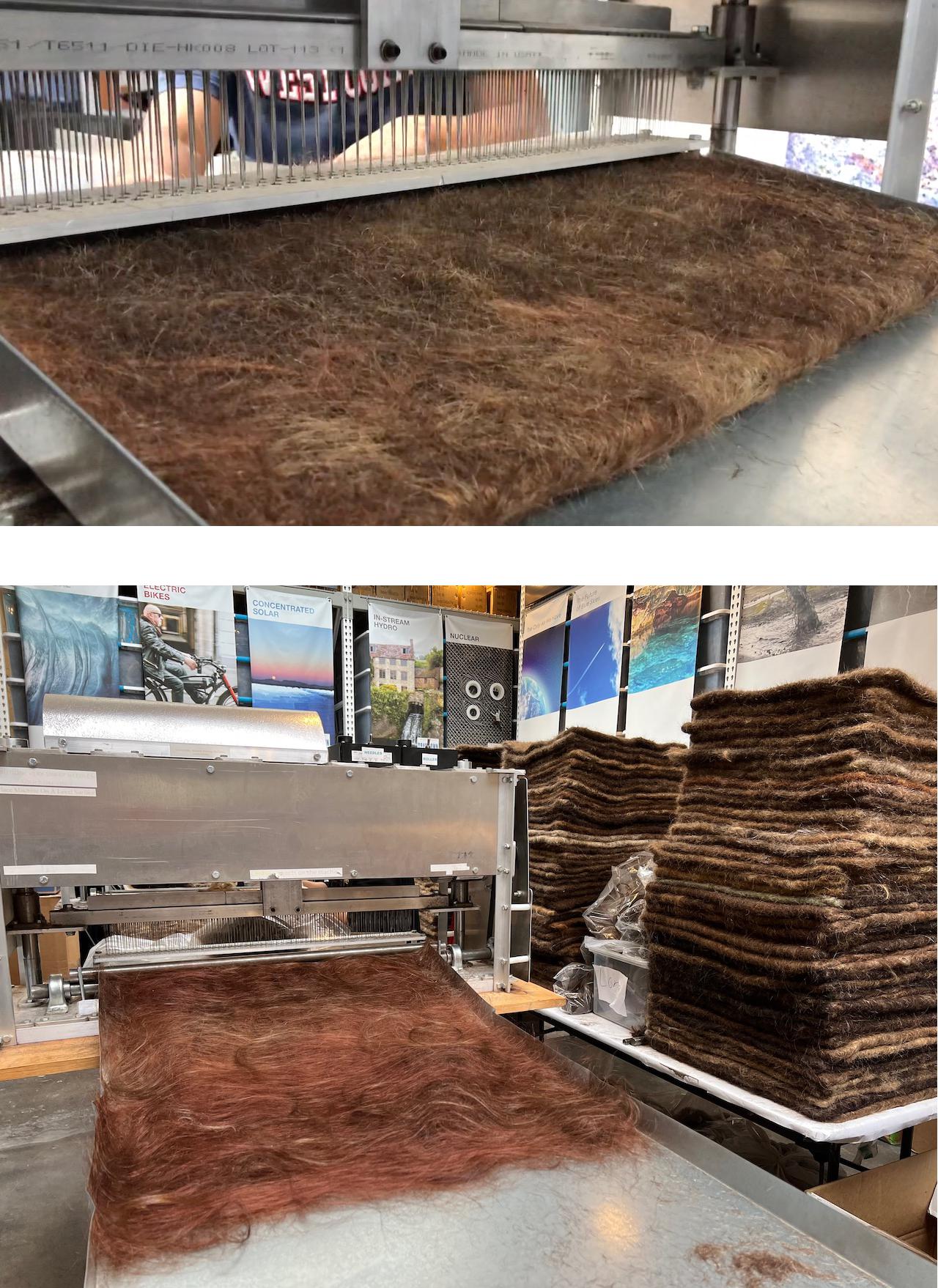THE FIBERS : PROPERTIES AND HISTORY OF USE¶
What is wool ?¶

Wool is a soft material coming from the hairs of sheeps (and some other mammals). In the usual language, we tend to consider wool to be sheep hairs, but there are other mammals that produce it : for instance camels, goats, and even dogs ! The term "wool" alone is reserved for the sheep's wool. When it is coming from other animals, the name of the animal is attached to it. For instance : dog wool.
Wool properties Wool has hygroscopic properties, which means that it is breathable ; it absorbs the air humidity. It also adapts to the body temperature variations.

The little frizzes of the hairs allow them to imprison air pocket : the air being naturally insulating, it conferes this ability to the wool.
Specificities of dog wool¶
Dog wool has some properties in common with the sheep wool : it is thermoregulatory, antibacterial and warm.
But the dog wool is not as elastic as sheep wool. It some ways, is it akin to mohair or angora.
Dogs'fur is composed of two different layers: the outer coat, which is long, straight, and harsh, and the undercoat which is soft and dense. It is the undercoat that is the most efficient to generate wool and coils of wool. Not all dogs have the ideal fur for this purpose.


Dogs are losing their hair during the whole year time, but twice a year, when the weather and temperature significantly change, dogs are shedding, which means that their undercoat is falling out suddenly. It is the best moment to collect them.

Below you can find a non-exhaustive list of dog species that have a great fur for the making of yarn. Nonetheless, for the workshops, you can gather both undercoat fur and outer fur, since it also felt greatly. The least waste !
Dog species
Here is a non exhaustive list of the dogs whose hairs can easily be used to make wool:
Husky de Sibérie
Leonberg
Tervueren
Akita Inu
Samoyède
Shetland
Colley
Spitz Japonais
Berger Blanc Suisse
Charplaninatz
Eurasier
Chow-Chow
Montagne des Pyrénées
Patous
Lion d’Occitanie
Berger allemand
Bouvier Bernois
Bearded Collie
Malamute
Groenendael
Golden Retriever
Bobtail
Finnois de Laponie
Border Collie
Saint Bernard
Colley
Spitz Loup
Spitz Orange
Lhassa-Apso
Blue Bay Shepherd
Buhund Norvegien
Terre Neuve
Loulou de Poméranie
Dogue du Tibet
Bouvier Bernois
Hovawart
Westies
Sarplaninnac
Chien Loup de Russie
Nizinny
Setter Irlandais
You can admire their cute faces on the DogWool's website
A little bit of history¶
Dog hairs : ancient uses¶
Spinning og dog hairs are an ancient art that come from Prehistoric Scandinavia.
Also there are some vestige of dog wool in America before the arrival of Colons and, with them, of sheeps.
Indian people were using exclusively dog wool : they were breeding the Salish, woolen dogs, that doesn't exist anymore. These dogs were sheared twice a year.
More recently, we can find this technique by the Eskimos to make warm garments with the undercoat of their sled dogs.
Human hair : a material between taboo and ethic¶
This subject gave me the opportunity to dive into the subject of ethic in fashion. Working with hair is not trivial.
Contemporary upcycling, recycling, revalorisation of dog hairs and human hair¶
About hair use in textile¶
I discovered Antonin Mongin's work on the Youtube channel Atelier d'Arts de France... that I encourage you to take a look at, you can discover much craftmen and cracftwomen there!
Antonin Mongin wants to revive a ancient and traditional craftmanship: the hair art.

Savine Schoorl, with her project Haar Haar, works on valorizing human hair through the spinning a yarn, and the creation of hats and other textile accessories. She considers that hair is part of our identity, but as soon as they are cut, they disgust people. When collecting hair in hairdressers' salons, she wondered about what was people's relationship with their hair.

About hair use for the environment¶
This caritative organization aims at collecting human hair, pet hairs and fleeces to create felted bioabsorbing mats.
In 2010, an oil spill occured in the Gulf of Mexico, and Matter of Trust sent a call out to collect hair from all over the world. A lot of hairdressers joined the dynamic of it, and it helped reduce the oil spill.

This french startup is the first pathway of hair collecting, and the researches they are launching on the reuse of hair is very diverse:
- creating mulch with hair. You put it onto the soil to reduce watering and weeding of it. It also nourrishes the soil.
- making hair mats to absorb oil pollution. Actually, hair can absorb about 8 times its weight of hydrocarbons. It is used to clean the port zones waters, oceans, but also the soil of polluted sites.
- researching the potential benefits of hair in term of skin care, thanks to the keratine it contains.

About dog hairs use in textile¶
Modusintarsia
Anne-Cathrin Schönrock and Franzicka Uhl created the firm Modusintarsia in Germany to produce wool out of dog hair. They stated that about 1000 tons of dog hairs were thrown in the bean ; this waste could be upcycled to become a ressource. This is why they created this firm.

Craftmanship to spin the dog fibers
There are a lot of people who want to use the hair of their dog(s) to create beautiful coil, and to knit it to make garments. Below you can see people posing into their most beautiful pullover in co-creation with their best four-legged friends !

To achieve this result, you can make use of the services of craftmen and craftwomen who spin the fibers to create the coil.
For instance, there are :
- Knit Your Dog
- Canislana
- Métiers d'Antan
The site of American Kennel Apparel gives advices to spin yourself your dogs'hairs !
Feel free to add your own references ! I focused on the references I already knew, I found, or my relatives gave me, but the more you have, the better you can display the fact that these fibers can be recycled, upcycled and revalorised !